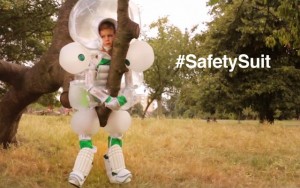Children benefit from some risk in play. The aim should be not to remove risk but help our children manage it and learn from their experiences.
Kidsafe suggests that children need opportunities to incorporate elements of risk in play in order to:
- Develop skills in negotiating the environment around them;
- Learn how to use playground equipment safely and for its designed purpose
- Develop coordination and orientation skills
- Take acceptable risks, and
- Learn about the consequences (positive and negative) of risk taking.
Taking risks can lead to both positive or negative outcomes for children and can elicit varying degrees of anxiety in parents in the process.
Risks with negative outcomes are referred to as “hazards”. These are things that are not obvious to a child that often result in injury. An example of a hazard may be a puddle of water on slippery tiles.
 Risks with positive outcomes are referred to as “challenges, adventures, and opportunities”. They are activities in which the child can judge his or her abilities and decide whether to take the risk. Examples may be balancing on a log, using a shovel to dig in the garden, or building a tall tower out of cardboard boxes.
Risks with positive outcomes are referred to as “challenges, adventures, and opportunities”. They are activities in which the child can judge his or her abilities and decide whether to take the risk. Examples may be balancing on a log, using a shovel to dig in the garden, or building a tall tower out of cardboard boxes.
